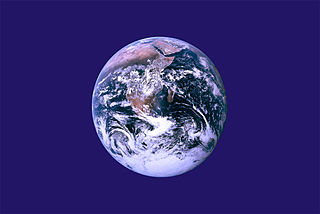"Earth provides enough to satisfy every man's need, but not every man's greed"
Earth Day is a name used for two different observances, both held annually during spring in the northern hemisphere, and autumn in the southern hemisphere. These are intended to inspire awareness of and appreciation for the Earth's environment. Each year, the April 22 Earth Day marks the anniversary of the birth of the modern environmental movement in 1970.
Things to do on this Earth Day
Become better informed and active. Find sources of sound environmental and natural resource information and access them regularly. Attend local public meetings and become active in your community. Understand your local environmental challenges and accomplishments. Protect your local open spaces. Learn about local watershed initiatives. Volunteer.
We All Have One Home:EARTH
Mahatma Gandhi
Earth Day is a name used for two different observances, both held annually during spring in the northern hemisphere, and autumn in the southern hemisphere. These are intended to inspire awareness of and appreciation for the Earth's environment. Each year, the April 22 Earth Day marks the anniversary of the birth of the modern environmental movement in 1970.
Things to do on this Earth Day
Become better informed and active. Find sources of sound environmental and natural resource information and access them regularly. Attend local public meetings and become active in your community. Understand your local environmental challenges and accomplishments. Protect your local open spaces. Learn about local watershed initiatives. Volunteer.
- Participate in a local environmental education or Earth Day experience. Visit a new or nearby nature center, science center, park, cooperative extension office, museum or conservation district office. Ask questions.
- Get your hands dirty! Participate in a river cleanup, pick up litter or plant a flower garden.
- Enjoy nature! Sit and rest in the woods or along a stream. Take a hike, go biking, try camping, have a picnic, go fishing, look for hawks, rent a canoe, investigate a cave, look for fossils, fly a kite, take photographs, paint some scenery - enjoy the outdoors!
- Protect water quality! Clean up after pets. Test wells annually for bacteria and nutrients. Don't dump used oil, paint, coolants or other chemicals into the ground, stormdrains or garage drains. Participate in stream bank and wetlands restoration projects and local watershed management planning.
- Use products that produce less waste and pollution. Substitute water-based products whenever possible when buying paints and household cleaners. Or, switch from chemical-type cleaners to natural products like soap and water. Use fertilizers and pesticides properly and reduce use by implementing biological and mechanical controls. Read and follow instructions and precautions for all such products and dispose of them properly (and not into storm drains or the ground). Buy products in bulk or with minimal packaging materials.
- Recycle! Purchase products that contain recycled-content materials as often as possible.
- Save energy! Turn off unneeded lights and appliances. Replace standard light bulbs with energy efficient fluorescents to reduce carbon dioxide emissions. Buy energy efficient household appliances and yard tools. Consider energy efficient construction and building design when building, buying, or adding on to a home or office.
- Use your car less and take good care of it. Keep the car tuned and leak-free, and get it inspected regularly. Keep tires properly inflated and dispose of used motor oil and cooling fluids at designated recycling centers. Try using mass transit, carpooling, walking or riding a bike as often as possible. When shopping for a new car, look for the most fuel-efficient and investigate models that accommodate use of other fuels besides gasoline.
- Conserve water! Install flow restrictors on all faucets and use low-flow shower devices. Do not let the water run wastefully when washing anything. Water the lawn in the early morning or late afternoon. Run washing machines and dish washers only when full. Repair leaky pipes, faucets and toilets.
What We Can Do at Home!
- Replace frequently used light bulbs with compact fluorescent bulbs – reduce your carbon footprint by 450 pounds a year
- Car pool, use public transportation or drive a fuel efficient car – reduce your carbon footprint by 1 pound for every mile you do not drive
- Keep your tires properly inflated and get better gas mileage – reduce your carbon footprint another 20 pounds for each gallon of gas saved
- Change your car's air filter regularly
- Run your dishwasher only when it’s full
- Make sure your printer paper is 100% post consumer recycled
- Move your heater thermostat down two degrees in winter and up two degrees in the summer – reduce your carbon footprint by 2,000 pounds
- Keep your water heater insulated and the thermostat no higher than 120°F
- Clean or replace dirty air conditioner filters as recommended
- Take shorter showers because showers account for 2/3 of all water heating costs
- Use a low-flow showerhead because less water means less energy to heat the water – reduce your carbon footprint 350 pounds a year
- Use cold water to wash your clothes – reduce your carbon footprint by 500 pounds a year
- Buy locally and reduce the amount of energy required to drive your products to your store
- Buy products with less packaging and recycle paper, plastic and glass – reduce your garbage by 10% and you’ll reduce your carbon footprint by 1,200 pounds a year
- Plant a tree because trees suck up carbon dioxide and make clean air for us to breath
- Buy energy efficient appliances
- Weatherize and insulate your home, and consider double pane windows
- Turn off what you’re not using and even unplug electronics you’re not using – reduce your carbon footprint by thousands of pounds a year
- Buy organic food because the chemicals used in modern agriculture pollute the water supply, and require energy to produce
We All Have One Home:EARTH


No comments:
Post a Comment